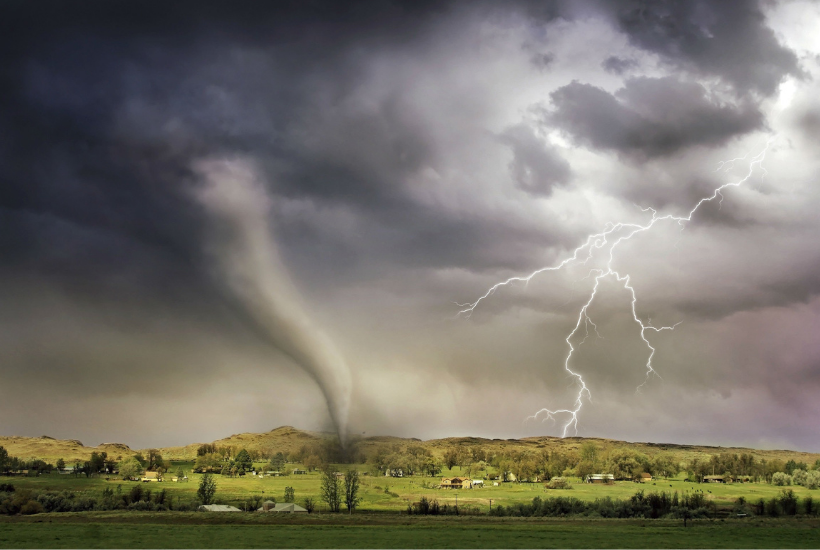
Weather vocabulary serves important communication purposes for adult ESL. Students can use it to quickly break the ice when speaking with someone new because it is such an innocuous part of small talk. Knowing the terms associated with the extreme weather found in their location could be a matter of safety or even life or death situations. After all, every area has its own extreme weather.
Because adults are often responsible for the safety of others as well as for themselves, they must learn weather vocabulary. Below, I’m going to outline a few ways you can teach weather vocabulary to your adult ESL students.
Variety is key in vocabulary activities.
1. Introduce the weather vocabulary with images.
Clipart might be good for a worksheet, but if you want to make a digital presentation, try to use full-color photographs. Using eye-catching photos to introduce the terms will grab your students’ attention. These visuals will likely make it easier for them to remember the words, and they just might prompt some discussion.
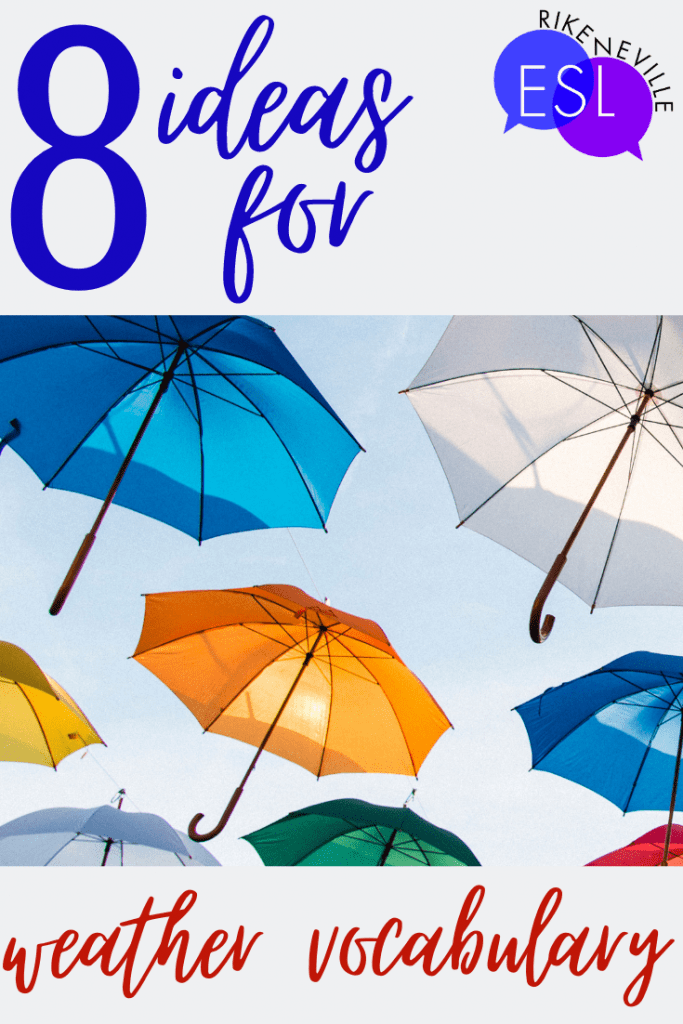
2. Add it to your clothing vocabulary unit.
What kind of clothing a person wears often depends on what’s going on outside our windows. Adding some weather vocabulary to your clothing theme is easy.
- You can have them group articles of clothing and footwear according to weather conditions.
- You can ask them to compare and contrast appropriate footwear for rainy, snowy, or even icy weather. What might they wear when it’s windy? What about when it’s freezing vs. when it’s sweltering?
3. Weather vocabulary meshes well with any unit on the seasons.
Is it spring? Let’s talk tornadoes (if you are in Oklahoma, for example). Summer? Drought might be an important word, especially when the local government requires water conservation. Fall? Those severe thunderstorms could prompt a discussion on unplugging expensive devices during an electrical storm or why it’s better to stay inside when there is a lot of lightning. Winter? Um, polar vortex, anyone?
4. Review weather vocabulary with a bingo game.
Whether your bingo consists of images or words, your students will enjoy a break in the routine when you review weather vocabulary in a game form. Someone (usually the teacher) can call out the term or a definition for the word. They can give a sentence with it in context and hum the term instead of saying it. Try giving a clue in a riddle format such as “What flashes in the sky without making a sound?”
If your bingo cards are text, you can hold up pictures to represent the term or display them on a large screen. Students then have to match the image to the word on their bingo card. No time to create your own? How about these?
5. Make it local.
Start recording some local weather forecasts to have clips you can use for any type of weather. Try to get footage of average, everyday forecasts as well as some that involve extreme weather. Use them as listening exercises with students listening for specific words or make some listening comprehension questions.
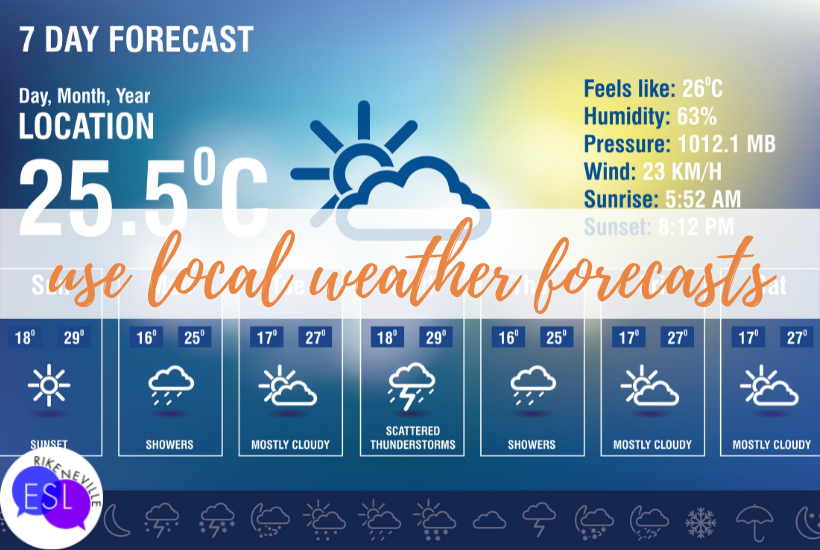
I recommend recorded local forecasts. Forecasters will use weather vocabulary pertinent to your area and likely use an accent that students are accustomed to hearing outside the classroom. Also, live forecasts can be challenging to work into a schedule unless your class takes place at the same time that one is aired. Adult students who might have to deal with childcare, meal prep, or jobs and don’t have the necessary devices or know-how to record a forecast to watch later would likely get left behind.
6. Make it personal.
Have your students share photos of weather phenomena common to the region they came from. Encourage them to describe the images using the weather vocabulary from the lesson and incorporate any other relevant terms. They’ll love hearing first-hand stories about giant snowdrifts, smothering sand storms, and monsoon rains, and other such weather conditions that they’ve never experienced themselves.
7. Go digital with weather vocabulary BOOM cards.
Even if you are lucky enough to be safely teaching face-to-face, you’ll still want to take advantage of digital learning options for your students. With BOOM cards, you can give students interactive homework that uses photos and audio. The self-checking feature gives them immediate feedback and allows you to do something other than yet another grading session. Read more about BOOM digital resources for adult learners.
8. Toss in some weather-related idioms.
Adult ESL students love learning idioms! Introduce them to some that go beyond the ever-popular “It’s raining cats and dogs.” If you don’t have the foggiest idea of which idioms to teach, consider one of these:
- a dry spell
- chasing rainbows
- raining on someone’s parade
- shooting the breeze
What should be number 9?
Leave a comment to tell me about one of your successful ways of teaching weather vocabulary to adult ESL. I’d love to hear from you!
Pre-made Weather Vocabulary Resources for Adult ESL
Whether you are looking for a digital presentation to introduce the vocabulary, a low-prep printable game, or self-checking digital BOOM cards, you’ll love what I have made for you. Below you’ll find a few of the resources I have available.
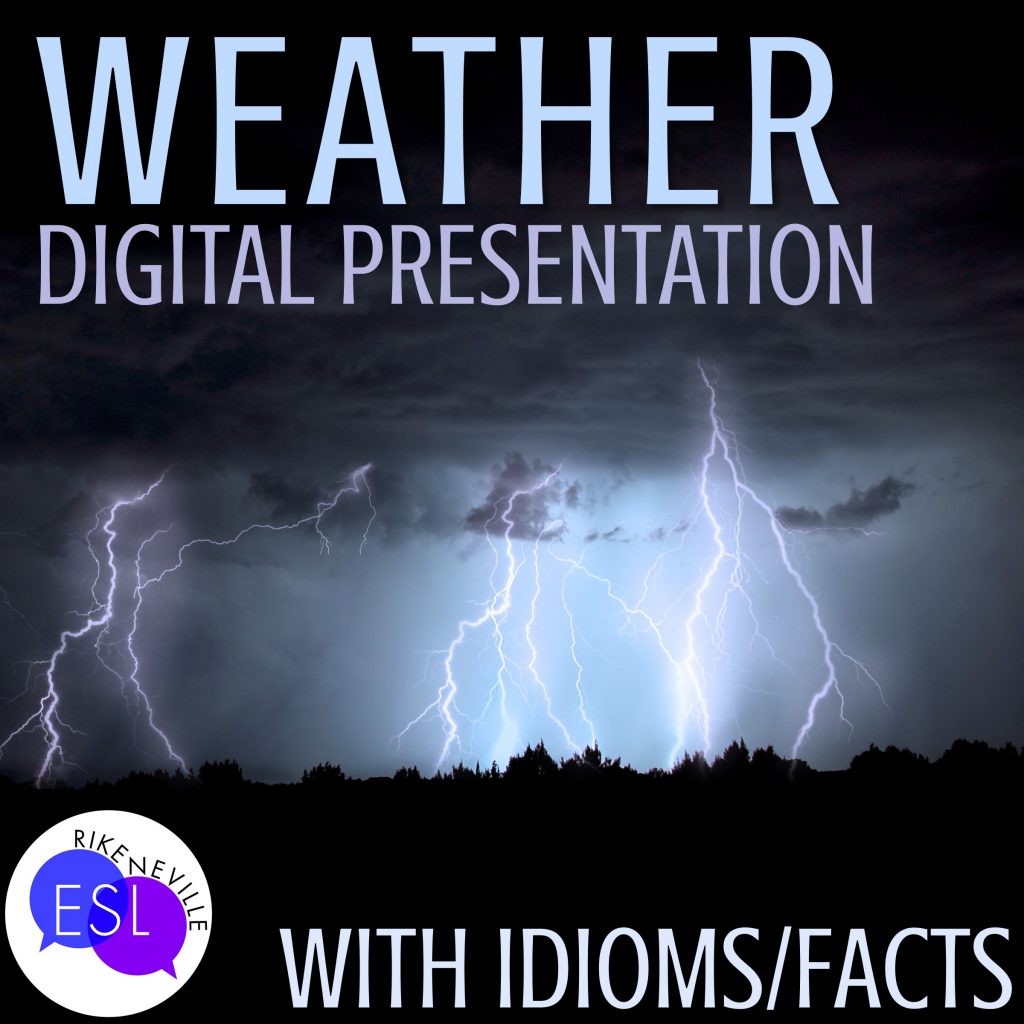
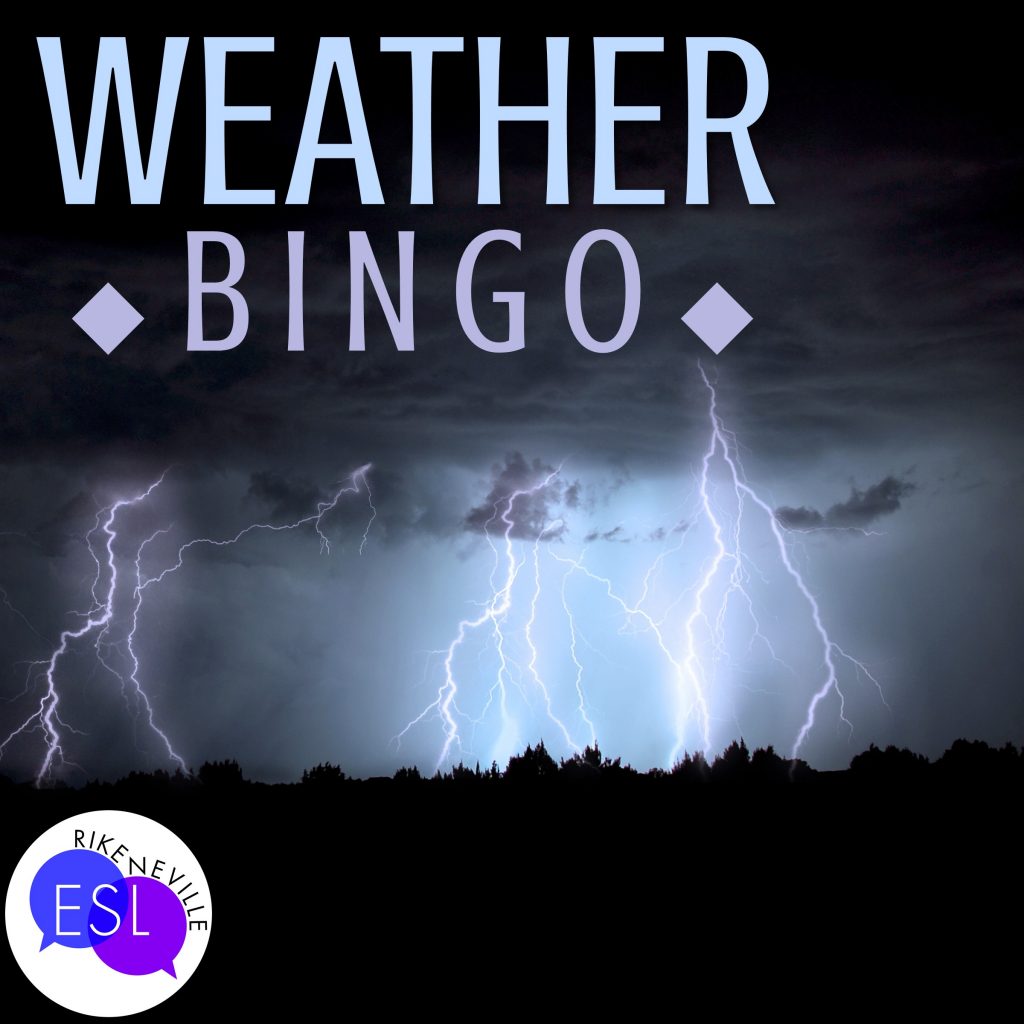
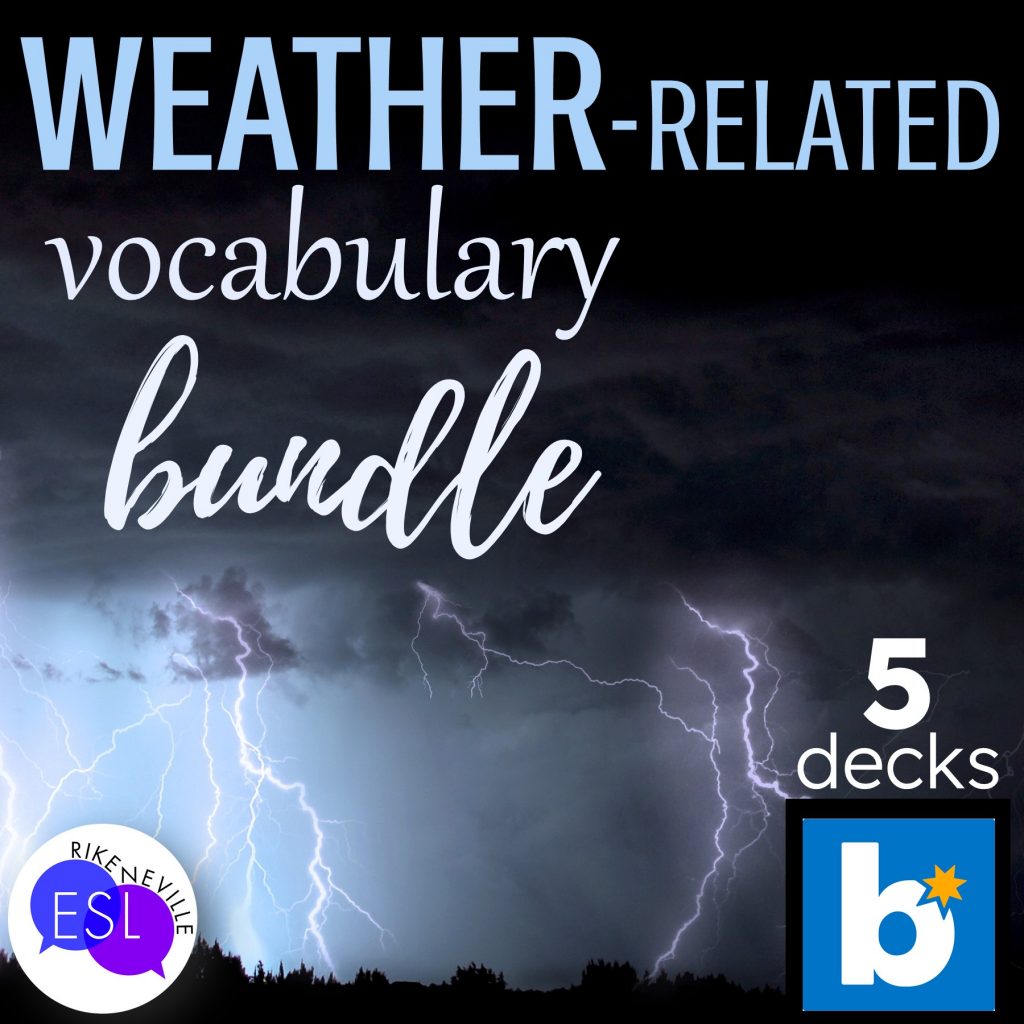

Leave a Reply